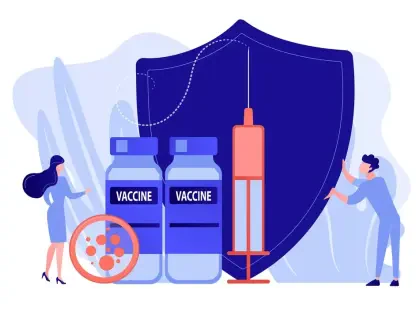Today, we have the pleasure of speaking with Donald Gainsborough, a leading political mind in policy and legislation. His insights are invaluable, especially in understanding how legislation can influence public health and environmental safety. In this interview, we delve into the topic of PFAS, also known as “forever chemicals”, with a focus on their impact on human health, particularly in teenagers. Gainsborough’s expertise offers a unique perspective on how these concerns intersect with policy.
Can you explain what “forever chemicals” are and why they are a concern?
Forever chemicals, or PFAS, are man-made compounds famous for their persistence in the environment. They don’t degrade easily and are found in many consumer products, leading to widespread exposure. Their concern lies in the mounting evidence that these chemicals could pose serious health risks, including several types of cancers and hormonal disruptions, adversely impacting the population.
What specific illnesses have been linked to PFAS exposure according to previous studies?
Research has highlighted connections between PFAS exposure and various illnesses. Notably, they’ve been linked with kidney and testicular cancers, thyroid issues, cardiovascular conditions, and preeclampsia. These are significant health concerns that underscore the urgency for deeper investigation and potentially, policy intervention.
How does prenatal exposure to these chemicals potentially affect a child’s blood pressure in their teenage years?
Prenatal exposure to PFAS poses risks that might not manifest until much later. Studies indicate that exposure can result in elevated blood pressure during teenage years, affecting cardiovascular health in long-term and potentially altering a child’s developmental trajectory, thereby raising concerns from public health perspectives.
Why did the study focus particularly on boys and children born to non-Hispanic Black mothers?
The focus stems from data suggesting these groups are at higher risk for elevated blood pressure due to genetic, environmental, or socioeconomic factors. Understanding how PFAS exposure interacts with these factors is crucial for developing targeted interventions and ensuring comprehensive public health strategies.
What methods did the researchers use to gather data for this study?
Researchers employed a longitudinal approach by tracking children from the Boston Birth Cohort over several years. Analyzing numerous blood pressure readings during routine pediatric visits allowed them to observe changes and identify patterns over time related to prenatal PFAS exposure.
Can you describe the demographic and age groups included in the Boston Birth Cohort?
The Boston Birth Cohort is a diverse group incorporating multiple ethnicities and socioeconomic backgrounds. Participants range from early childhood to adolescence, offering a comprehensive view on how different factors, including prenatal conditions, influence health across various ages and groups.
How did the researchers measure and analyze blood pressure in the study participants?
Blood pressure was measured routinely throughout the participants’ developmental stages, categorized into specific age brackets. Researchers calculated percentiles based on age, sex, and height for a thorough analysis, also considering factors like maternal health and lifestyle to ensure robust findings.
What did the study find about the relationship between PFAS levels in mothers and blood pressure in their children?
The study found a significant association between PFAS levels in mothers and increased blood pressure in their teenage children. Elevated maternal PFAS levels correlated with higher systolic and diastolic pressures, illustrating a potential risk carried from prenatal exposure into adolescence.
How does maternal PFAS exposure affect systolic and diastolic blood pressure in teenagers?
A doubling of maternal PFAS levels corresponded with increases in both systolic and diastolic blood pressure readings among teenagers. This elevation suggests a potential compounding effect over time, increasing health risks and highlighting the urgency for further examination and mitigation efforts.
Why might boys and non-Hispanic Black children be more at risk for elevated blood pressure?
Several factors, including genetic predispositions and environmental influences, may contribute to the heightened risk. Social determinants of health and structural inequities potentially exacerbate these risks, indicating the need for focused research and tailored health policies.
What steps do experts believe are necessary to reduce prenatal and childhood exposure to PFAS?
Experts advocate for comprehensive policy changes, focusing on restricting PFAS use in consumer products and enhancing water safety regulations. They suggest phasing out existing sources and promoting safer alternatives as critical steps to curb exposure and protect public health.
How significant is the impact of PFAS on hormones and adolescent development, according to experts?
PFAS are known to interfere with hormonal systems, potentially disrupting normal adolescent development. These disruptions can lead to compounded health challenges, emphasizing the need for preventive measures and informing the development of policies to safeguard younger populations.
What are the broader implications of the study’s findings for future research?
The study highlights the need for continued investigation into the long-term effects of prenatal exposure to PFAS, particularly as new evidence unfolds. Future research must address gaps in understanding how these chemicals affect different population segments and life stages.
In what ways might prenatal exposure to PFAS influence health across generations?
Prenatal exposure could set off changes that impact not only the exposed generation but subsequent ones, through persistent biological alterations. Understanding these multi-generational effects is vital for shaping effective long-term health strategies and policy interventions.
How does the persistence of PFAS in the human body complicate efforts to mitigate its effects?
The tenacity of PFAS presents challenges in reducing their presence, as they can remain in the body for years, influencing health even after exposure ceases. This persistence demands comprehensive approaches that go beyond individual efforts, requiring systemic solutions.
What actions can policymakers take to address the issue of PFAS exposure?
Policymakers can support legislation to limit PFAS usage, enhance public health safety standards, and fund more research into alternative substances. Strategic policy actions focused on prevention, education, and remediation are essential to tackle this growing concern effectively.
What is your forecast for addressing PFAS-related health concerns through policy?
Given the growing awareness of PFAS impacts, I anticipate an increase in legislative action prioritizing public health. Collaborative efforts between researchers, advocates, and policymakers could spur significant advances, paving the way for healthier communities and proactive safeguarding measures.









